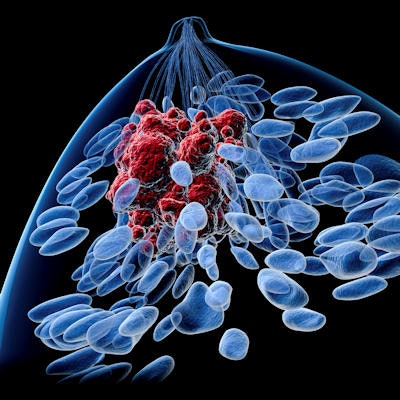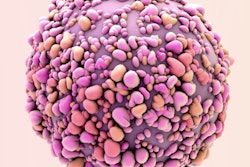
The incidence of male breast cancer is rising, making it important to recognize risk factors and assess imaging use patterns to find the disease early, according to research presented April 5 at the Society for Breast Imaging (SBI) meeting in Hollywood, FL.
More men are being identified as at risk of breast cancer via genetic testing, and mammography and/or breast ultrasound screening could be helpful in this group, study presenter Dr. Julia Goldberg of the New York University (NYU) School of Medicine and colleagues wrote. However, the use of breast cancer screening in men at risk of the disease hasn't really been investigated.
"There is a potential role in selective screening in this population, but the effectiveness of such screening remains unexplored," the group wrote.
Goldberg's group conducted a study to evaluate the pattern of male breast imaging use over time, determine diagnostic outcomes, and outline risk factors associated with cancer. The research included all male mammography and ultrasound exams performed at NYU Langone Medical Center between 2005 and 2017, for a total of 2,052 exams conducted in 1,869 men. Of these, 1,781 (86.8%) were diagnostic and 271 (13.2%) were screening.
The researchers analyzed exam indications, imaging findings, biopsy recommendations, and pathology results, and correlated these with the following patient characteristics: age, personal or family history of breast cancer, the presence of genetic mutation, and whether the man was of Ashkenazi descent.
Of the 2,052 exams, 149 (6.5%) required biopsy; of these biopsies, 41 (27.5%) were malignant and 108 (72.5%) were benign. All of the men who underwent screening exams had a family history of breast cancer and/or genetic mutations that put them at higher risk of the disease. Five node-negative cancers were identified from the screening exams, for a cancer detection rate of 19 per 1,000 exams. These cancers were discovered on average after four years of screening.
Goldberg and colleagues also found the following factors were associated with male breast cancer:
- Older age (p < 0.001)
- Ashkenazi descent (p < 0.001)
- Genetic mutations (p = 0.005)
- Personal history of breast cancer (p < 0.001)
- First degree family history (p = 0.039)
While current breast imaging use in men is mostly diagnostic, the study findings suggest that may need to change, according to the researchers.
"Despite increasingly identifiable risk factors associated with breast cancer in men, and despite a potentially high cancer yield from screening, male breast imaging utilization has remained stagnant over time," the team concluded. "Identifying risk factors and understanding imaging utilization patterns may help strategize future approaches to improve breast cancer detection and outcomes in men."




















